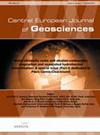Extreme chemical conditions of crystallisation of Umbrian Melilitolites and wealth of rare, late stage/hydrothermal minerals
引用次数: 7
Abstract
Melilitolites of the Umbria Latium Ultra-alkaline District display a complete crystallisation sequence of peculiar, late-stage mineral phases and hydrothermal/cement minerals, analogous to fractionated mineral associations from the Kola Peninsula. This paper summarises 20 years of research which has resulted in the identification of a large number of mineral species, some very rare or completely new and some not yet classified. The progressive increasing alkalinity of the residual liquid allowed the formation of Zr-Ti phases and further delhayelitemacdonaldite mineral crystallisation in the groundmass. The presence of leucite and kalsilite in the igneous assemblage is unusual and gives a kamafugitic nature to the rocks. Passage to non-igneous temperatures (T<600 °C) is marked by the metastable reaction and formation of a rare and complex zeolite association (T<300 °C). Circulation of low-temperature (T<100 °C) K-Ca-Ba-CO2-SO2-fluids led to the precipitation of sulphates and hydrated and/or hydroxylated silicate-sulphate-carbonates. As a whole, this mineral assemblage can be considered typical of ultra-alkaline carbonatitic rocks.温布里亚Melilitolites结晶的极端化学条件和丰富的稀有晚期/热液矿物
Umbria Latium超碱性地区的千英石显示出完整的特殊晚期矿物相和热液/水泥矿物结晶序列,类似于科拉半岛的分选矿物组合。本文总结了20年来的研究成果,发现了大量矿物,有些非常罕见或全新,有些尚未分类。残余液体碱度的逐渐增加使得Zr-Ti相的形成和进一步的delhayelitemacdonaldite矿物在地块中的结晶成为可能。在火成岩组合中,白闪石和千硅石的存在是不寻常的,使岩石具有卡马辉石的性质。过渡到非火成岩温度(T<600°C)的标志是亚稳反应和形成罕见而复杂的沸石缔合物(T<300°C)。低温(T<100°C) k -ca - ba - co2 - so2流体循环导致硫酸盐和水合和/或羟基化硅酸盐-硫酸盐-碳酸盐的沉淀。整体而言,该矿物组合可视为典型的超碱性碳酸盐岩。
本文章由计算机程序翻译,如有差异,请以英文原文为准。
求助全文
约1分钟内获得全文
求助全文
来源期刊

Central European Journal of Geosciences
GEOSCIENCES, MULTIDISCIPLINARY-
自引率
0.00%
发文量
0
审稿时长
>12 weeks
 求助内容:
求助内容: 应助结果提醒方式:
应助结果提醒方式:


